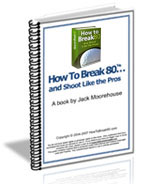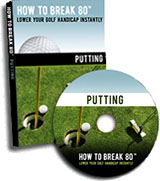
When Playing It Safe is Smart By Jack Moorhouse The decision to play a hole or a round conservatively or aggressively plagues every golfer at one time or another. Which of us hasn't been tempted to hit the "miracle" shot—the kind that players talk about in the clubhouse years later. But gambling too often in golf can be costly, especially if you’re a professional. Take Phil Mickelson. He's been criticized for gambling during the final round of tournaments. His aggressiveness has cost him tournament victories—and million dollar purses—on some occasions. If you're not familiar with the 17th at Sawgrass, it's one of the most pressure-packed holes in professional golf. It's a par three, 137-yard hole, whose green sits in the middle of water. Miss the green, which probably seems as big as the head of a pin when hitting, and you're in the drink. Hit it and you might still have a long putt for a birdie. In addition, as the next to the last hole on the course, the 17th sets up perfectly as dramatic finishing hole. Talk about ratcheting up interest to the finish a tournament. Obviously, the island hole is a challenge for all golfers, whatever their golf handicap. For players with high golf handicaps, just hitting the green and not the water spells success. For tournament players, however, the challenge is more strategic than tactical. Do they play the hole conservatively or aggressively? Do they go for the pin and the birdie, or do they go for the fat part of the green and the par? Heading down the stretch, the wrong decision can be the difference between winning or losing the tournament. Of course, there are times when you must go for it. But playing conservatively is often better than going for it, even if it costs you a stroke, as I tell players during golf instruction sessions. To paraphrase Jack Nicklaus, as a golfer you'll face times when you need to gamble to have a chance at winning. But being conservative when boldness is not imperative is better in the long run. The trick is knowing when to be aggressive and when to be conservative.
If you have doubts as to whether you should go for it or play it safe when opportunity knocks, try splitting strategies during your next several rounds. In the first round play the front nine very conservatively. That means doing things like hitting the driver only if the hole is wide open, playing for the fat part of every green, and laying up on par fives unless you have a mid-iron shot or less to the green. Then play an aggressive back nine. Hit your driver on every par four and par five. Shoot for the pin every time, regardless of the difficulty, and go for every par five on your second shot. In your next round do the opposite. Play a conservative front nine and an aggressive back nine. Compare the scores over the course of several rounds. See if being aggressive or conservative significantly improves them. But don't take the result to determine if you should always play either extremely conservatively or aggressively. Rather, let the result help you decide what your strategic tendencies should be when you're not sure how to play a specific hole or course. If you are the type of player who gains nothing by being aggressive or it costs you strokes when you do, play conservatively instead. And keep that big number off your scorecard. It can be difficult deciding when to gamble and when to be conservative. It's something only you can decide at the time of play. However, if statistics tell you that you don't play your best being aggressive, play conservatively. Doing so will help you cut down your golf handicap over the long haul. Jack Moorehouse is the author of the best-selling book "How To Break 80 And Shoot Like The Pros." He is NOT a golf pro, rather a working man that has helped thousands of golfers from all seven continents lower their handicap immediately. He has a free weekly newsletter with the latest golf tips, golf lessons and golf instruction.
|





